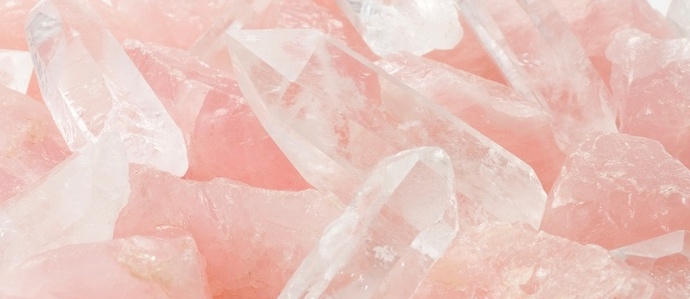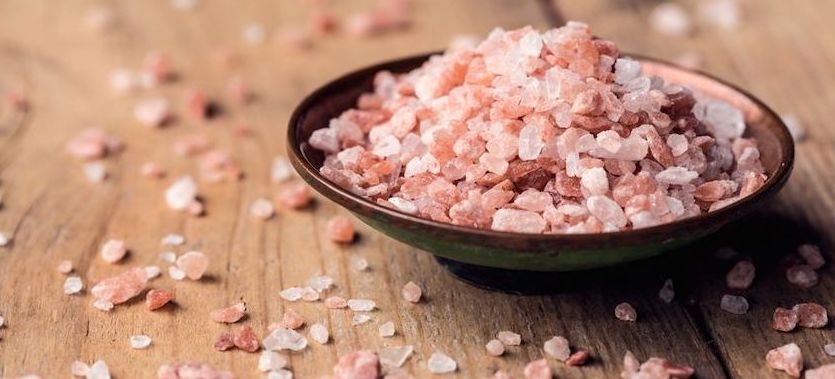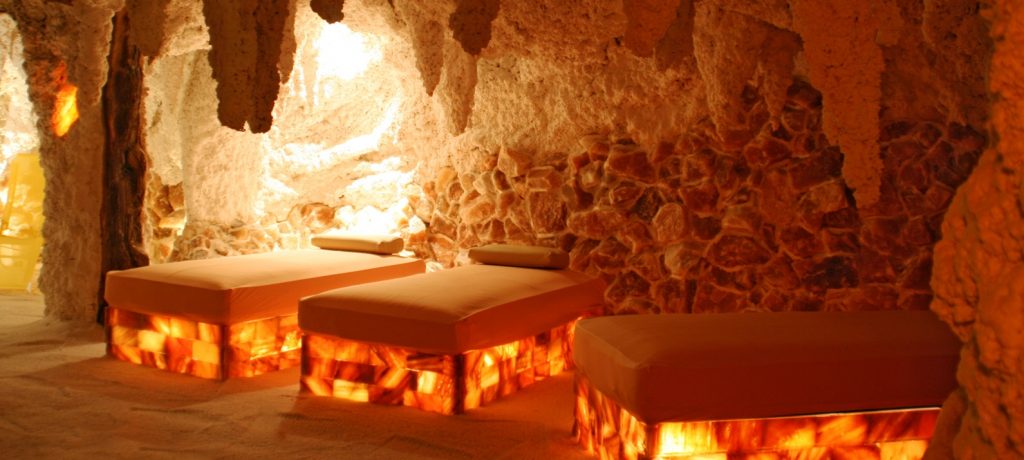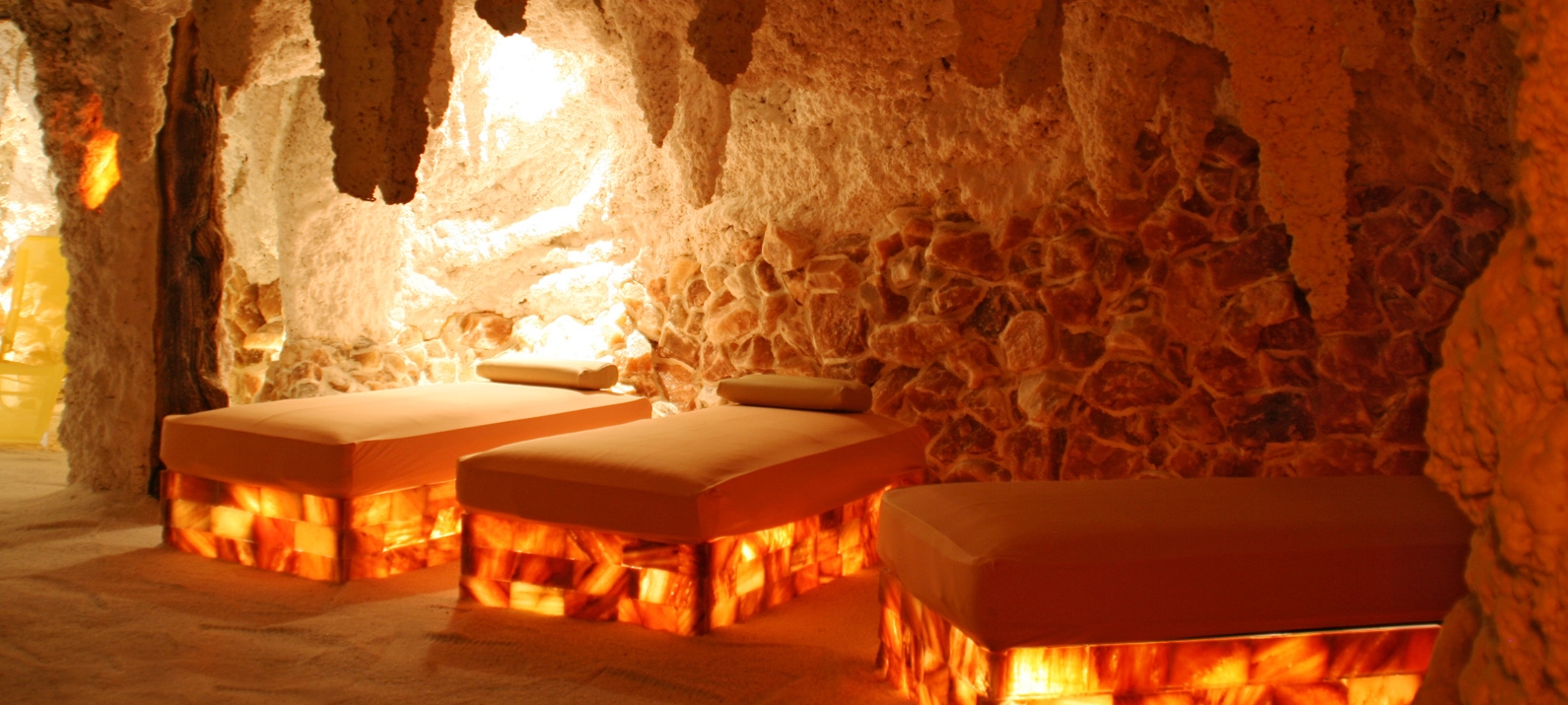
Salt, mostly made up of sodium chloride (NaCl), is one of the planet’s most abundantly occurring minerals, and also one of the most crucial elements needed by living organisms.
While the mineral is a nutritional staple in most people’s diets, there are also other ways to incorporate it into our daily routines. Many spas and wellness centres are offering dedicated salt facilities and treatments, which are becoming increasingly popular with the broader public, and which have proven to be extremely beneficial to our health. This article depicts the most common facilities and treatments, and also shines light on the financial aspects of running such a facility.
Why is salt so beneficial for our health?
Nutrition
Our bodies are complex systems that require a combination of different macro- and micronutrients on a day-to-day basis in order to function properly. While a substantial amount of our nutrients comes from carbohydrates, proteins and fats – the so-called macronutrients –we have to also make sure to include enough vitamins and minerals in our diets to live healthily and supply our body with all the substances it needs for growth and repair. Salt is one of the micronutrients we need to consume moderately yet consistently (the World Health Organisation recommends around five to six grams per day).
While salt can undoubtedly cause severe damage to the kidneys, heart and even bones if regularly consumed beyond the recommended daily amount, it is yet essential for us humans to ensure a small amount is incorporated into our daily diet in order to live well.
So what exactly makes salt so important? First of all, salt supports regular muscle functioning (and, therefore, the smooth running of most bodily activities) by enabling the crucial transmission processes between nerves. Furthermore, it provides sufficient electrolytes for the body to regulate fluids and also keeps blood sugar levels stable. Having enough salt in one’s diet naturally regulates blood flow and pressure as well as overall water content. Other benefits worth mentioning are:
· Improved insulin sensitivity
· Better digestion and a healthy pH level in the stomach
· Lower acidity in the body’s cells
· Improved skin conditions
· Better sleep quality (salt suppresses stress hormones)

Breathing
The benefits of inhaling salt particles has long been documented and can be traced back to the 1840s when Polish salt miners were found to have better respiratory health than the average population. Later, scientific tests confirmed that the negative ions in salt can significantly reduce inflammation levels and therefore improve conditions such as asthma, bronchitis and various allergies.
This finding is particularly valuable in today’s world. Considering the high levels of pollution in many cities around the globe, where our lungs are constantly exposed to harmful airborne particles, breathing in salty air can act as kind of a mini detox. This is due to salt’s antibacterial, anti-fungal and anti-microbial properties, which eliminate toxins quickly and efficiently.
Skin
Apart from absorbing salt internally (through the processes of eating and breathing), it is also possible to absorb the beneficial properties through our largest organ, skin.
This process is supported by the fact that salt is a natural exfoliator: by deeply cleaning the pores first, salt’s nourishing properties can be better taken in afterwards. Furthermore, salt helps restore the skin’s natural pH level (which is around 5.5), and naturally improves the skin barrier function. Moreover, its anti-inflammatory properties help to balance oil production, which is often associated with acne-prone skin, and also better restores the skin’s hydration.
Salt facilities
Depending on the size of the spa, facilities can range from a single small salt cabin to entire salt caves.
In terms of dry facilities, salt rooms and salt caves are dedicated indoor spaces that are made up of or lined with salt blocks (oftentimes Himalayan salt, giving it that distinct pinkish hue) and with loose salt spread on the floor. Guests are encouraged to take between 25 minutes and an hour to lie down on one of the loungers provided, simply breathing in the salt-heavy air. Oftentimes, activities such as yoga sessions are run in salt rooms to provide enhanced wellbeing through deeper breathing. It is a common to add rock lamps to the interior to provide a certain ambiance and a relaxing atmosphere. The benefits of salt caves and rooms are various, and include improved breathing through a better lung capacity, a boosted immune system and better sleep. Also, most salt rooms and caves provide a stable room temperature with moderate humidity and a lack of pollutants and pollens, which enables deep breathing even for asthmatics. Guests suffering from a respiratory condition are advised to frequently book a session (up to four times a week) in order to see faster results.

Salt saunas have a similar design to regular saunas, yet differ slightly in their interior setup. While normal saunas predominantly feature wooden walls and benches, the walls of salt saunas are lined with real Himalayan salt stone that releases negative ions for a better air quality. The temperature is kept around 70°C, with a (for saunas atypical) low humidity of 20-30%. These conditions allow for an easy absorption of the more than 100 beneficial minerals in the salt, as the pores of the skin open up and blood flow naturally increases.
As for wet facilities, operators may choose to build a salt steam room, which is a hot and humid chamber that follows the same concept as regular steam rooms; however, it is enhanced with fine salt circulated in the air. The benefits are various; while the salt absorbed by the lungs helps remove toxins from the system, the heat of the steam further soothes muscles and improves circulation. Furthermore, guests with respiratory conditions such as asthma often see improvements quickly.
Another wet facility is the salt-water pool. While many pools have chemical chlorine added to them, spas with dedicated salt-water pools for healthy bathing upgrade their facilities with natural chlorine, which is more gentle and therefore less irritating on the skin, making it ideal for people with skin conditions or sensitive skin.
What treatments/therapies can be offered?
While wellness facilities have a variety of options when it comes to offering salt treatments and therapies, this article focuses on two of the most common ones.
First of all, there is halotherapy. Derived from the Greek word ‘halo’ meaning salt, this type of treatment approach allows guests to simply sit in a salt room or cave and absorb the benefits of salt through the air. For this treatment to be effective, the mineral is first finely grated into micro-particles and then dispersed through the air by a halogenerator. The heated salt particles are deeply inhaled by the guests and penetrate the lungs, bronchi and other organs, cleansing the respiratory system and helping eliminate toxins. Usually, temperatures in such a room range from 20 to 25°C, with a humidity of around 50%.
The use of a halogenerator is vital in this type of setup as it releases larger amounts of inhalable particles than salt walls, and can lead to faster results in guests with respiratory problems.
Another popular type of treatment that incorporates salt is thalassotherapy (‘thalasso’ is Greek for ‘sea’). Originally developed by seaside towns in France and the UK in the 19th century, spas all over the world are now incorporating sea products into their offerings – commonly in the form of salt scrubs, algae or mud wraps, and seawater showers. Rich in minerals such as potassium, calcium and iodine, these types of treatment are said to be beneficial for the skin, and can help improve conditions such as eczema, arthritis and even muscular pain.
Investment factors for operators
Offering salt treatment facilities and therapies is without a doubt popular amongst spas – yet the question arises whether it is worth the investment as well?
The brief answer is yes. However, operators considering investing in the equipment and construction necessary for running such a facility should be aware of the following:
First of all, space. Not all spas and wellness centres have the physical space for the creation of a dedicated wet or dry treatment facility. That being said, it is relatively easy to convert a room into a salt chamber or cave. Operators might also consider transforming one of their existing saunas into a salt sauna.
Secondly, the cost of salt itself is relatively low, around $20-30 for a 5kg bag, lasting for around 300 sessions. Other costs, including overhead and labour costs, are also not particularly high, as limited service is required to run such facilities.
One significant cost is the acquisition of a halogenerator, as these are required in order to diffuse salt into the air. Nevertheless, they have low power consumption and a long lifespan, enabling a quick return on investment.
Thirdly, there are currently no special certifications or courses required by law to run salt facilities as they are considered non-medical, alternative wellness modalities.
Finally, offering dedicated salt treatment facilities can be a great additional revenue generator as – different to saunas and steam rooms, which are often part of the entrance fee – salt facilities can be charged at an extra cost. In addition, dedicated facilities can also be great marketing tools if implemented correctly, and can help drive considerable traffic to the spa or wellness centre.
Contact us today to learn how GOCO Hospitality can help you create your own unique salt treatment facilities:
info@gocohospitality.com or call on +66 2252 6288

